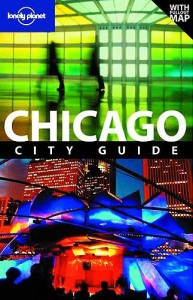If you enter Chicago from the east along I-94 or I-90 you would cross city limits at the Indiana-Illinois border or at the Calumet River. According to this book, however, you would seemingly not enter Chicago until you reached Roosevelt Road after another dozen-or-so miles. By focusing overwhelmingly on the North Side of the city, the book deprives its readers of some of the most inspiring and memorable features of what Norman Mailer called “the last of the great American cities.”
True, Lonely Planet does a serviceable job covering the tourist meccas of the Magnificent Mile and Cubs-fanatic Wrigleyville; it might be sufficient for someone whose only goal is to kill boredom for a weekend in Chicago, and there’s nothing wrong in that. But I look at visiting a new city as an opportunity to really get under the skin of a place; to absorb the sights and sounds of an exciting and unfamiliar world, and the Lonely Planet Guide to Chicago is deficient when it comes to sharing what makes Chicago Chicago.
For example, you can’t come to terms with the meaning of baseball in this town unless you deal with the rivalry between the North Side Cubs and the 2005 World Series Champion White Sox on the South Side. But here, the latter is given a succinct and somewhat disparaging review and isn’t even entitled to an entry in the Index. The History section makes a brief mention of black migration to “glitzy images of thriving neighborhoods like Bronzeville” with a reference to a half-page spent on that neighborhood (compared to six pages spent on the Gold Coast). The Pullman neighborhood, formerly a company-owned village and site of one of the defining strikes in American labor history doesn’t even warrant a mention, despite city-run walking tours and a host of national accolades and historic designations. Surprisingly, even Downtown Chicago gets short shift here. The Chicago Loop is the second-largest business district in the U.S., after Midtown Manhattan, yet it is given a mere ten pages of this 280 page book, shouldered aside to make room for an extensive look at the Navy Pier tourist trap. These are just a few of many omissions, and they are not trivial.
The book isn’t a total wash. What it does cover it tends to cover well, and the interesting and insightful sidebars provide a more nuanced look at this fascinating place than the table of contents would suggest. But if you want to meet Chicago for the first time — if you want to see the postcard skyline *and* meet some of the characters that made Studs Terkel’s “Division Street” such a powerful and revealing work, you’ll have to go a little further than Lonely Planet will take you. Scour contents of guides to Chicago (quick and easy to do here at Amazon), and when you find one with headings for Bridgeport, Bronzeville, Pilsen, and Lincoln Park, you’ve probably found a winner.
If you like this review, you can give it a thumbs up on Amazon.
